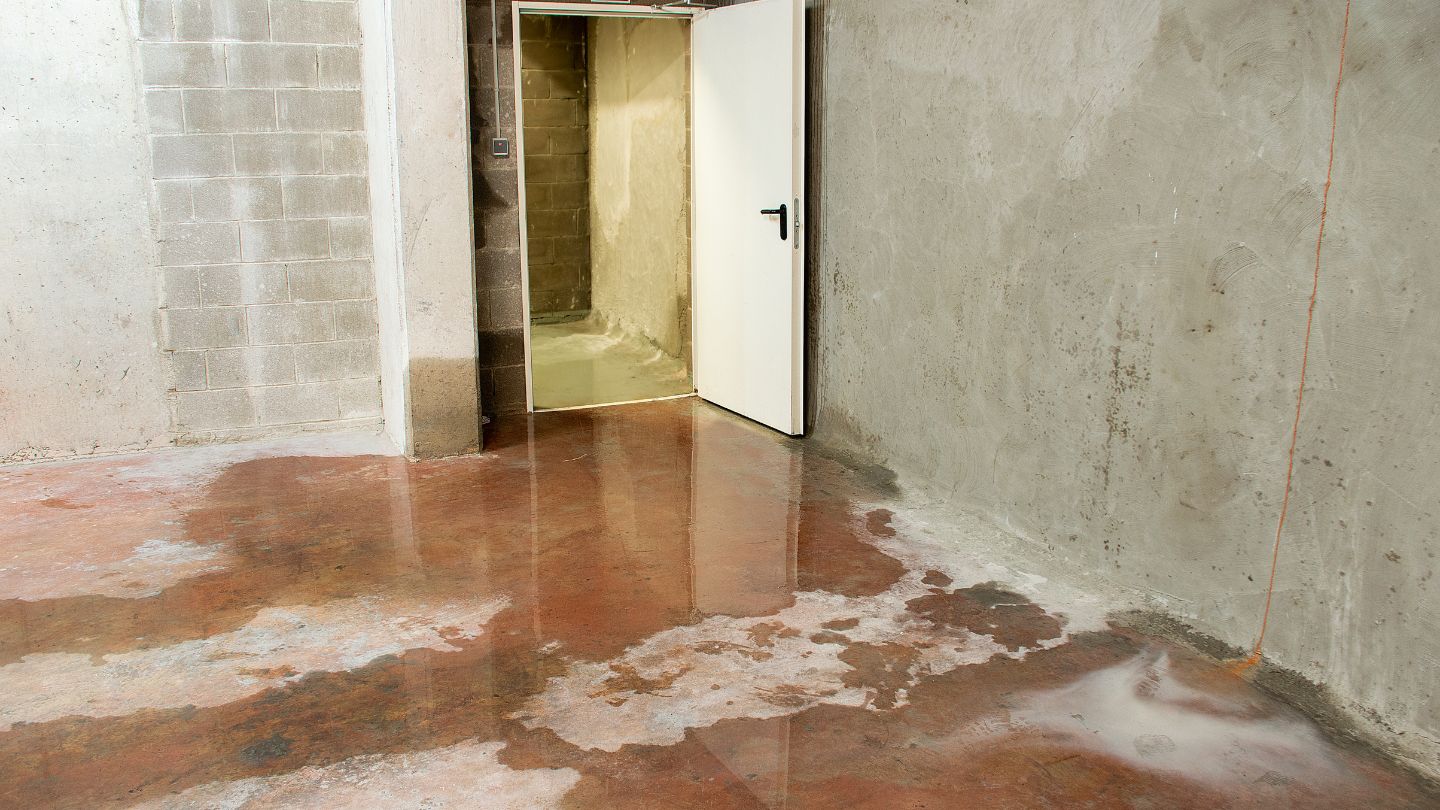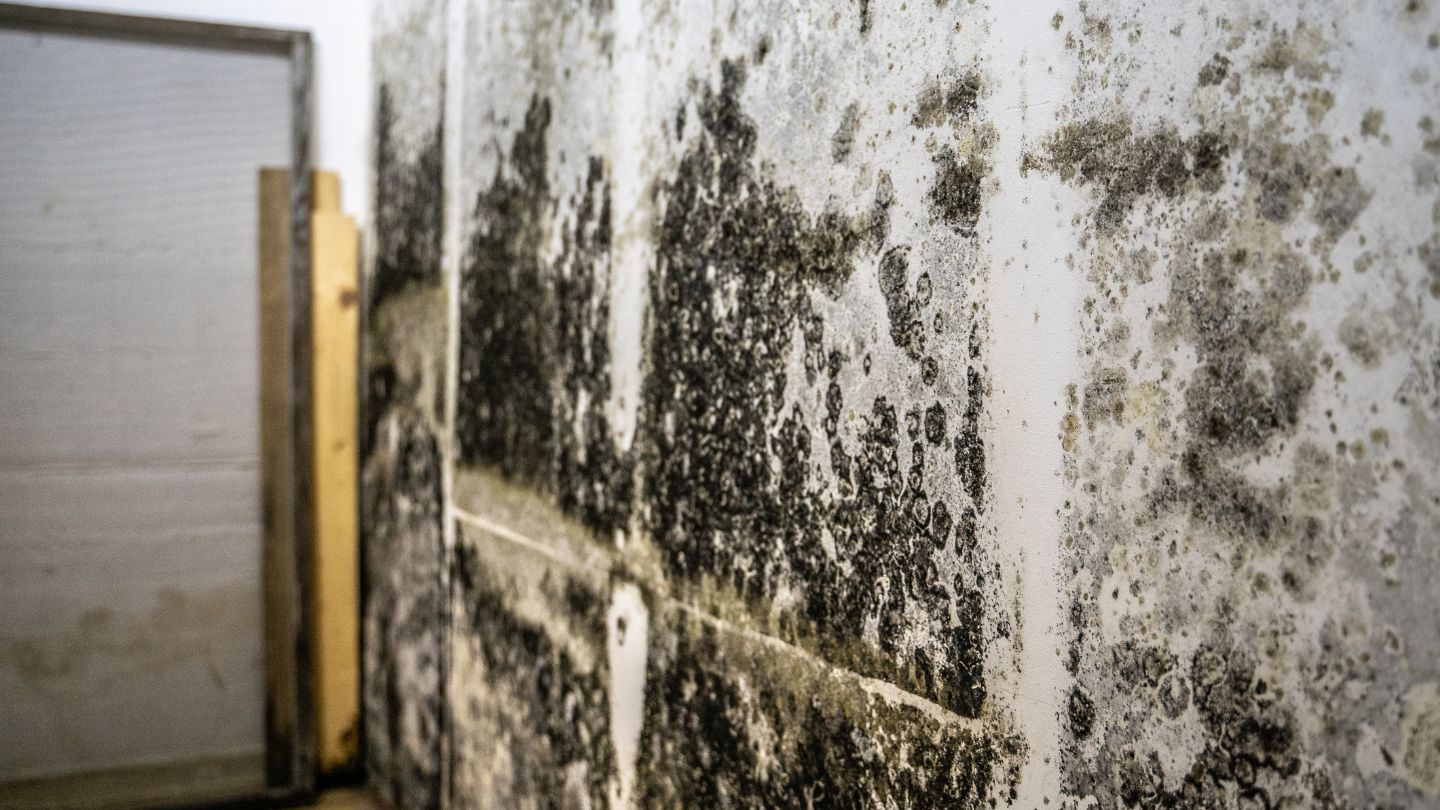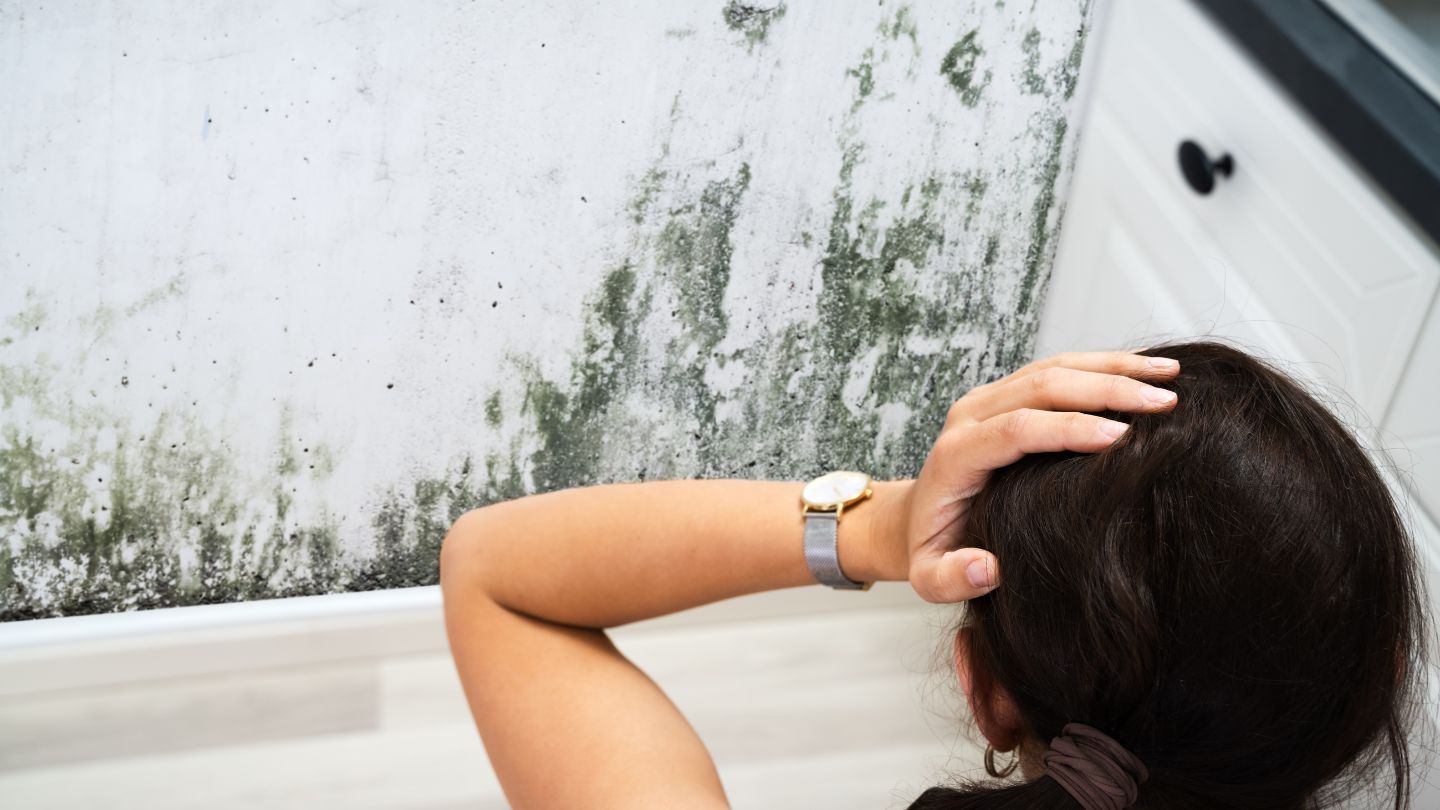Mold from water damage can be more dangerous than many realize. It not only damages property but can also pose serious health risks. In this blog, we’ll explore how dangerous is mold from water damage, the signs to look out for, and steps to prevent its growth.
Key Takeaways
- Mold thrives in moist environments and can start growing within 24 to 48 hours after water damage, making prompt water damage restoration essential.
- Signs of mold presence include musty odors, visible stains, and soft or squishy floors; early identification is key to preventing extensive damage and health risks.
- Mold exposure can lead to serious health issues, particularly respiratory problems and allergic reactions, emphasizing the need for professional remediation when significant growth occurs.
Why Mold is a Common Issue After Water Damage
Mold is notorious for thriving in moist environments, making water-damaged areas a perfect breeding ground. When water seeps into porous materials like wood, drywall, or fabric, it creates a fertile environment for mold spores to settle and grow. The combination of moisture and organic material is all mold needs to flourish. This is why after any form of water damage, be it from a flood, leak, or burst pipe, the risk of mold growth skyrockets.
Addressing water damage promptly is crucial because:
- Mold can start forming within 24 to 48 hours if areas remain wet.
- When water is left sitting for an extended period, the likelihood of mold growth increases due to the stagnant environment.
- Flooded porous materials retain moisture, creating ideal conditions for mold to thrive.
- Ignoring these warning signs can lead to severe mold infestations that are much harder to control and require extensive mold remediation efforts.
Immediate action is necessary due to the rapid onset of mold growth.
Moreover, mold growth isn’t just a superficial problem. It can penetrate deep into building materials, causing structural damage over time. This mold damage can compromise the integrity of your home, leading to costly repairs and allowing mold grow in hidden areas.
Understanding the relationship between mold vs water damage is essential, as mold thrives in the moist environments created by water damage and poses serious health risks. Recognizing these distinctions ensures effective prevention and remediation, safeguarding both your property and health.
Identifying Mold Growth After Water Damage
Prompt identification of mold growth helps mitigate its impact. One of the most obvious signs of mold is a persistent musty odor that lingers in your home. This smell often becomes more pronounced as the mold infestation grows. Visible signs of mold include dark, stained areas on walls, ceilings, or floors. These stains can range in color from black to dark green and may appear as spots or patches. Additionally, understanding the different types of mold can aid in effective prevention and treatment.
Another telltale sign is when floors feel ‘squishy’ or soft, indicating moisture issues beneath the surface. Mold doesn’t always grow in plain sight. It often thrives in hidden areas such as:
- behind walls
- under carpets
- inside air ducts
These concealed locations make it challenging to detect mold until it has already caused significant damage.
A persistent musty odor often indicates the need for professional mold inspection if hidden mold is suspected. Identifying these signs early can help prevent extensive mold damage and the associated health risks.
Health Risks Associated with Mold Exposure

Mold exposure poses significant and varied health risks. Mold spores released into the air can cause a range of health problems, particularly for individuals with pre-existing conditions like asthma or weakened immune systems. Mold exposure can lead to respiratory issues, allergic reactions, and in some cases, more severe health complications. Understanding these risks is critical for taking the necessary steps to protect your health and that of your family.
Next, we will explore specific serious health issues caused by mold exposure and the adverse health effects associated with it.
Respiratory Issues from Inhaling Mold Spores
Inhalation of mold spores can cause respiratory issues in both healthy individuals and those with pre-existing conditions. Mold spores can inflame the airways, resulting in symptoms like difficulty breathing, chest tightness, and coughing. For individuals with asthma, inhaling mold spores can trigger asthma attacks and exacerbate symptoms such as wheezing and shortness of breath. Those with chronic respiratory conditions like COPD may experience heightened sensitivity to mold, leading to severe breathing problems.
The impact of mold exposure on respiratory health is well-documented by organizations such as the World Health Organization and National Toxicology Program. These issues can manifest immediately upon exposure or develop over time, making it crucial to address mold problems promptly.
Short-term mold exposure can cause serious health complications for individuals with severe respiratory problems and lung disease. Keeping your living environment mold-free is crucial for maintaining good respiratory health.
Allergic Reactions to Mold
Exposure to mold can trigger allergic reactions that range from mild to severe, especially for those with a mold allergy. Common allergy symptoms include:
- Sneezing
- Nasal congestion
- Itchy eyes
- Skin rashes
For individuals with mold allergies, exposure to black mold can cause inflammation in the nose, eyes, and lungs, leading to severe discomfort. High humidity periods often lead to increased mold growth. As a result, allergic reactions can become more pronounced during these times.
The immune system’s response to mold exposure involves the release of histamine and other chemicals that cause inflammation, which can lead to skin irritation. Sensitive individuals may notice allergy symptoms develop within seconds or minutes after exposure to mold spores, as the mold releases spores.
Consult a doctor for diagnosis and treatment if you suspect mold exposure symptoms. Effective management of mold allergies involves medical treatment and proactive measures to reduce mold exposure at home.
The Dangers of Toxic Black Mold
Toxic black mold, also known as Stachybotrys chartarum, is particularly dangerous due to the mycotoxins it produces. These toxic compounds can irritate the respiratory system, causing symptoms such as coughing, sneezing, and respiratory distress. Mycotoxins are released by black mold spores and can lead to serious health consequences, including neurological problems like dizziness, memory issues, chronic fatigue, exposure to toxic fumes, and toxic mold.
Exposure to mycotoxins can result in severe allergic reactions and respiratory issues. The presence of toxic black mold in your household mold poses significant health risks, making it essential to produce mycotoxins and eliminate black mold as soon as it’s detected.
Professional mold remediation is often required to safely remove mold black mold and prevent its recurrence. Recognizing the dangers of toxic black mold highlights the importance of preventive measures to safeguard your health. A professional mold remediation company can help ensure the process is handled correctly.
Immediate Steps to Take After Water Damage

Immediate action after water damage is necessary to prevent mold growth and further damage. Mold can start developing within 72 hours of water exposure, so a rapid response is essential.
Begin by removing standing water and thoroughly drying and dehumidifying the affected areas. These actions are critical for controlling moisture and preventing mold growth indoors. The following subsections will provide detailed guidance on these immediate steps.
Removing Standing Water
To minimize the risk of mold growth:
- Promptly remove standing water to prevent lingering moisture.
- Utilize sump pumps to effectively eliminate large amounts of standing water.
- Conduct regular inspections for leaks.
- Perform prompt repairs to prevent future mold problems.
A pump can expedite water removal, making the drying process more efficient. This step is particularly important in areas prone to flooding or with leaky pipes. Quick removal of all standing water can prevent mold onset and protect your home from further damage.
Drying and Dehumidifying Affected Areas
Thorough drying and dehumidifying of affected areas are vital to preventing mold growth. Key points include:
- Mold can thrive in hidden areas if surfaces like drywall or baseboards do not dry thoroughly after water exposure.
- Industrial dehumidifiers can help with drying in humid areas.
- Ensuring that moisture levels are kept in check is essential to prevent mold.
To reduce mold growth risk:
- Keep indoor mold humidity levels below 50%.
- Use humidity monitors to track humidity levels in areas prone to mold.
- Ensure that all areas are completely dry to create an environment less conducive to mold growth and protect your home.
Long-Term Mold Prevention Strategies
Long-term mold prevention strategies are vital for protecting your home and health. Fix water leaks immediately, controlling indoor humidity, and ensuring proper ventilation are key measures to kill mold and prevent mold.
These strategies reduce the likelihood of future mold problems by creating a less conducive environment for mold. The following subsections will provide detailed guidance on these long-term prevention strategies.
Fixing Water Leaks Immediately
Promptly addressing water leak prevents mold growth. Leaks can occur from various sources, including:
- Roof leaks
- Plumbing leaks
- Hidden water leaks
Repairing these leaks promptly can significantly reduce the risk of mold by eliminating moisture sources. Regular inspections and maintenance can identify and fix leaks before they lead to mold issues.
Leaky pipes, a roof leak, and a plumbing leak are common sources. Fixing these immediately prevents conditions that encourage mold development. Keeping your home free from leaks is vital for long-term mold prevention.
Controlling Indoor Humidity Levels
Controlling indoor humidity levels is crucial for preventing mold growth. Aim to keep indoor humidity levels below 60% to minimize mold risk. Using dehumidifiers can help manage moisture levels effectively in areas vulnerable to mold.
Regular monitoring of indoor humidity levels ensures they stay below the recommended threshold. Maintaining low humidity levels creates an environment less conducive to mold growth, protecting your home and health while preventing constant moisture.
Ensuring Proper Ventilation
Proper ventilation prevents mold growth. Improved ventilation expels moist air, preventing mold development in enclosed spaces. Areas like kitchens and bathrooms are particularly prone to high humidity and should have adequate ventilation.
Installing exhaust fans in kitchens and bathrooms can effectively expel excess moisture outdoors. Improving airflow throughout the home facilitates moisture reduction, helping to mitigate mold growth. Proper ventilation protects your home from mold and maintains good indoor air quality.
When to Seek Professional Mold Remediation

Professional mold remediation is necessary for ensuring safety and thorough mold removal. Professional remediation is required for extensive mold growth over 10 square feet. Visible mold spots, regardless of color, signify that immediate action to require professional remediation is necessary.
Individuals with severe mold allergies or chronic lung conditions should seek professional mold removal to avoid serious health risks. Leaving the property during mold remediation is recommended for safety, as mold can be harmful.
Closely monitoring water-damaged areas can help identify mold issues early, prompting timely professional intervention.
Final Thoughts on Mold and Water Damage
Mold resulting from water damage is not just an inconvenience but a serious risk to both your home and your health. It thrives in damp environments, often forming within just 24 to 48 hours, and its growth can lead to structural issues and respiratory problems. Taking immediate action, like addressing water issues promptly and implementing prevention strategies, is essential to mitigating its harmful effects and ensuring a safe living environment.
When it comes to expert assistance, 911 Floods R Us is a trusted name for water damage repair in Atlanta and mold remediation. We specialize in swift, professional responses to contain damage, eliminate mold, and restore properties to their original state. With 24/7 availability and a commitment to quality, you can rely on us to safeguard your home and health against the dangers of water damage and mold growth.
Frequently Asked Questions
How can you tell the difference between mold and water damage?
Water damage is often visible as warped or bubbling surfaces, peeling paint, or yellowish stains. Mold appears as fuzzy or slimy patches in green, black, or brown hues and is often accompanied by a distinct musty odor. If you’re unsure, professional inspection can help accurately identify the issue.
What are the health risks of mold vs water damage?
Mold exposure poses significant health risks, including respiratory issues, allergic reactions, and asthma exacerbation, especially for vulnerable individuals. While water damage itself doesn’t directly harm health, it creates conditions conducive to mold, which can lead to long-term health complications.
Is it necessary to hire professionals for mold and water damage remediation?
Yes, professional remediation ensures proper identification, treatment, and prevention of future issues. Experts use advanced equipment to address hidden water damage, eliminate mold colonies, and improve air quality, safeguarding your property and health.
Can water damage always lead to mold growth?
Not always, but if moisture isn’t addressed promptly, mold can begin to grow within 24 to 48 hours in the affected area. Managing water damage quickly and maintaining low indoor humidity levels are key to preventing mold.

